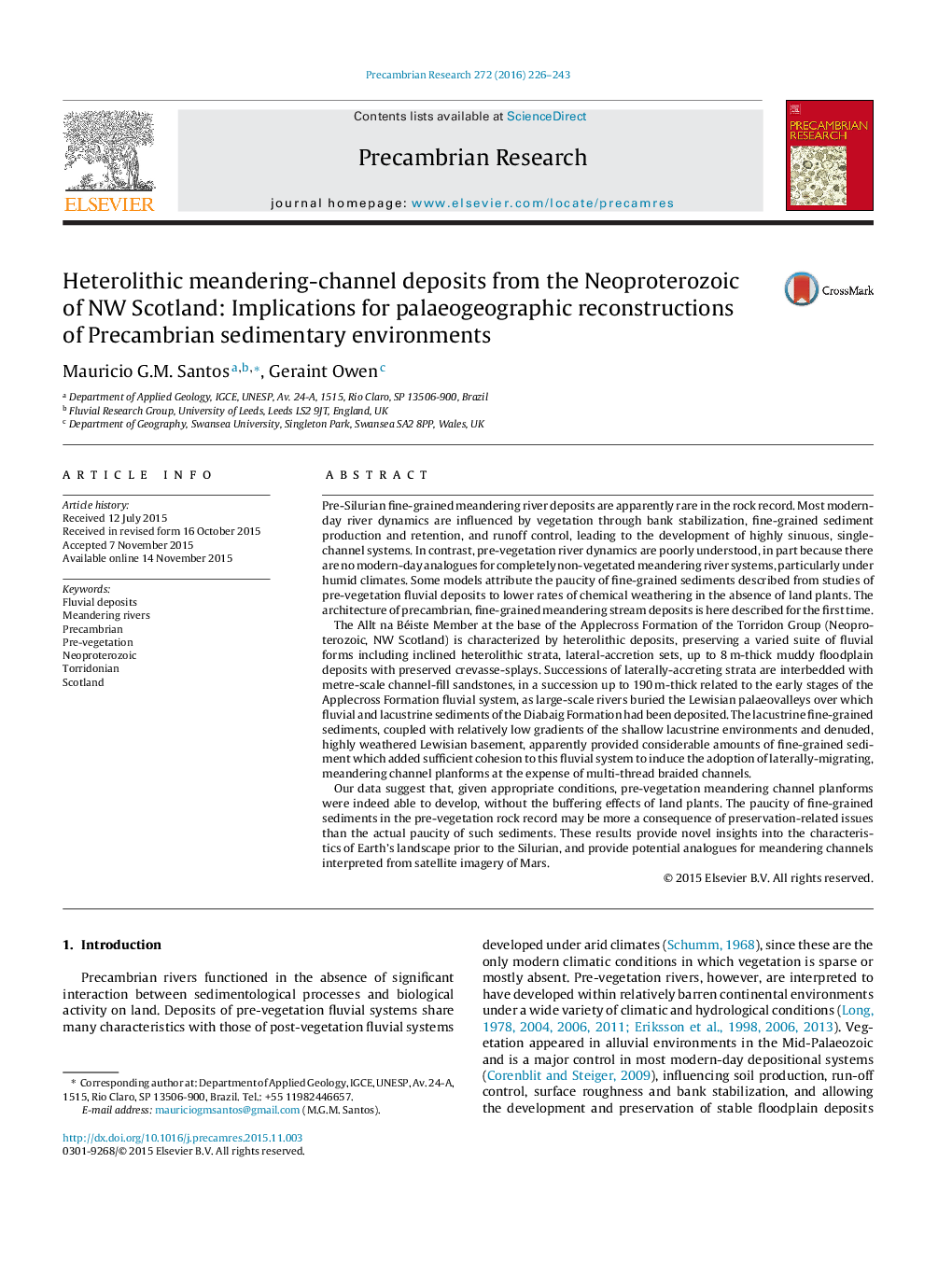| کد مقاله | کد نشریه | سال انتشار | مقاله انگلیسی | نسخه تمام متن |
|---|---|---|---|---|
| 4722445 | 1639603 | 2016 | 18 صفحه PDF | دانلود رایگان |

• First description of a Precambrian heterolithic meandering fluvial system.
• Challenge current paradigms regarding Precambrian alluvial environments.
• Novel insights on the Precambrian depositional dynamics.
• Depositional environment of the Torridonian succession (Neoproterozoic, NW Scotland).
Pre-Silurian fine-grained meandering river deposits are apparently rare in the rock record. Most modern-day river dynamics are influenced by vegetation through bank stabilization, fine-grained sediment production and retention, and runoff control, leading to the development of highly sinuous, single-channel systems. In contrast, pre-vegetation river dynamics are poorly understood, in part because there are no modern-day analogues for completely non-vegetated meandering river systems, particularly under humid climates. Some models attribute the paucity of fine-grained sediments described from studies of pre-vegetation fluvial deposits to lower rates of chemical weathering in the absence of land plants. The architecture of precambrian, fine-grained meandering stream deposits is here described for the first time.The Allt na Béiste Member at the base of the Applecross Formation of the Torridon Group (Neoproterozoic, NW Scotland) is characterized by heterolithic deposits, preserving a varied suite of fluvial forms including inclined heterolithic strata, lateral-accretion sets, up to 8 m-thick muddy floodplain deposits with preserved crevasse-splays. Successions of laterally-accreting strata are interbedded with metre-scale channel-fill sandstones, in a succession up to 190 m-thick related to the early stages of the Applecross Formation fluvial system, as large-scale rivers buried the Lewisian palaeovalleys over which fluvial and lacustrine sediments of the Diabaig Formation had been deposited. The lacustrine fine-grained sediments, coupled with relatively low gradients of the shallow lacustrine environments and denuded, highly weathered Lewisian basement, apparently provided considerable amounts of fine-grained sediment which added sufficient cohesion to this fluvial system to induce the adoption of laterally-migrating, meandering channel planforms at the expense of multi-thread braided channels.Our data suggest that, given appropriate conditions, pre-vegetation meandering channel planforms were indeed able to develop, without the buffering effects of land plants. The paucity of fine-grained sediments in the pre-vegetation rock record may be more a consequence of preservation-related issues than the actual paucity of such sediments. These results provide novel insights into the characteristics of Earth's landscape prior to the Silurian, and provide potential analogues for meandering channels interpreted from satellite imagery of Mars.
Journal: Precambrian Research - Volume 272, January 2016, Pages 226–243